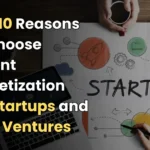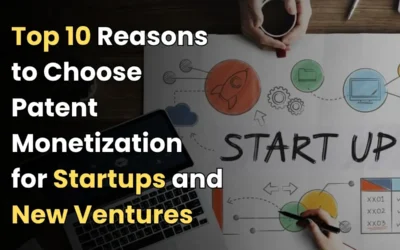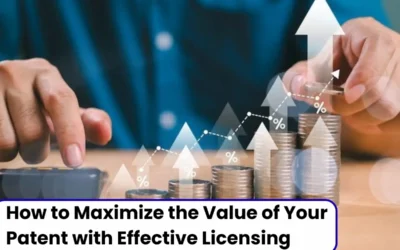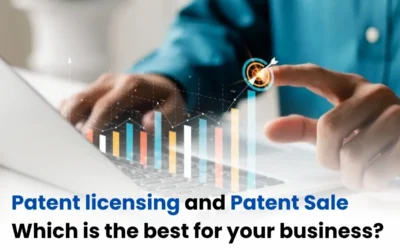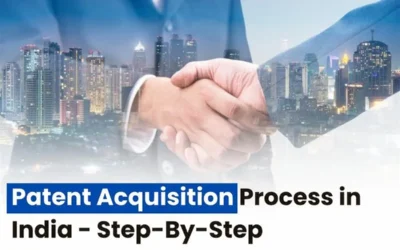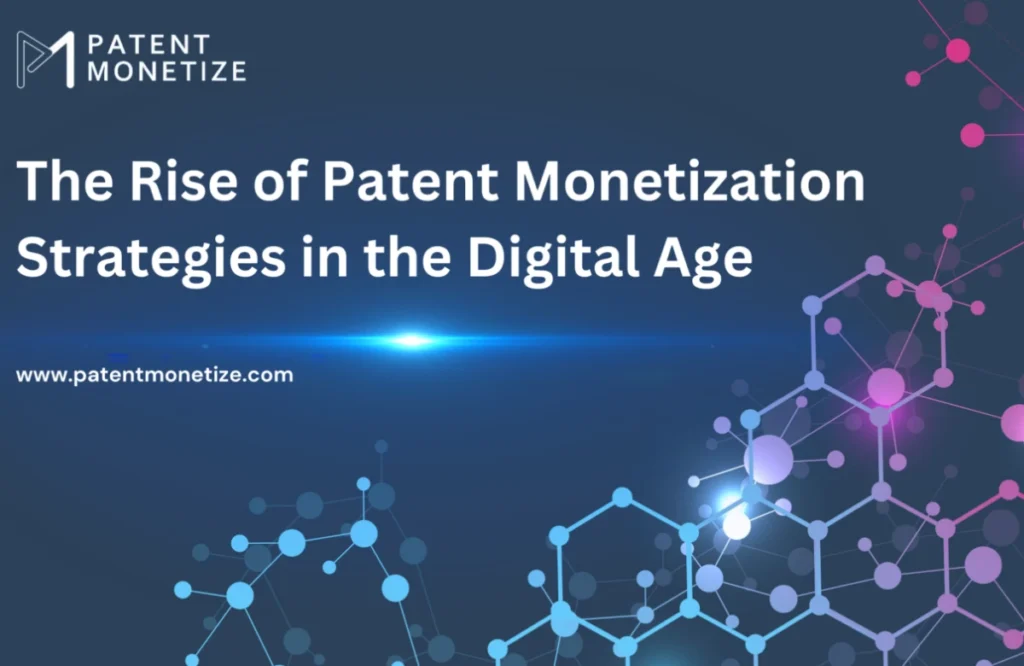
Digital has transformed businesses, with business growth mainly being seen in software, biotechnology, electronics, and telecommunication. These changes are leading to an increase in the patents filed for innovation. For example, patent monetization and enforcement are witnessed among individuals as well as businesses due to increasing innovation. These changes have placed the value of intellectual property skyrocket. Patent monetization in India has become very popular, or rather, quite in vogue, in recent years. In the digital era, patent monetization has become more significant; it is not just tech companies that look for different ways to monetize their intellectual property, but also the inventors. This article shows some of the emerging strategies on digitization related to patents, showing the basic principles of promoters, different methods of monetization, and the challenges that companies face in doing this, and the value of patent monetizing in today’s fast-moving technology world.
What Is The Evolution of Patents in the Digital Age-Patent Monetization in the Digital Age?
Patent monetization has shifted from a defensive strategy to a significant revenue stream in the digital age. Initially used to protect inventions from competitors, patents now generate income through licensing and sales. The rise in digital technologies, including software, electronics, and IoT devices, has led to an increase in patent filings and overlaps, creating opportunities for patent aggregators and Patent Assertion Entities (PAEs), sometimes called “patent trolls.” Tech giants like Apple and Microsoft leverage patent portfolios for patent licensing and strategic sales, and even start-ups are monetizing patents for funding. Key drivers of this trend include technological growth and patents’ increasing value as assets.
1. Globalization of Technology and Markets
The digital world is growing increasingly interconnected by many kinds of digital networks. Businesses and technologies are crossing borders today. Companies are competing in global markets, and it has witnessed a surge in patents being filed around the globe. Patent portfolios have become more significant and complicated. And companies seek to squeeze as much value out of such portfolios through patent licensing to other firms or patent sales to interested parties elsewhere in their markets.
2. The Rise in Patent Litigation and PAE Activity
The digital technology has made patent litigation grow and, thereby, created an industry of patent assertion and settlement claims. Patent trolls, for lack of a better term, have seized on this new era of litigation to get patents precisely to assert infringement claims against alleged infringers. PAEs rarely, if ever, produce a product or offer a service; they simply
extort settlement agreements or a license. As anticompetitive and anti-innovation as the business models are viewed to be by PAEs, it is that same class that has permitted the advent of patent monetization as a business model.
3. Intellectual Property Takes on New Significance in the Digital Economy
In the digital economy, the power has shifted to intellectual property rights (IPR) as the new springboard for business success. It is no longer just about a defensive asset but the source of income in licensing or all forms of monetization. Patents are used only by major technology companies such as Google and Microsoft for very basic defensive means, but can indeed be an income-generating activity. Increasingly, venture capitalists have come to pay attention to the patent portfolio of a firm, which is increasingly perceived as collateral that can be used to finance or, in some instances, even serve as collateral for future streams of income.
4. Venture Capital Financing and Patent-Lien Financing
The digital generation has felt a rise in the number of start-ups, specifically in the industries of IT, biotechnology, and artificial intelligence. There is an evolving interest among venture capital investors to use portfolios of patents as a value tool that adds to the value proposition of the start-up. Today, the technology companies launch funding rounds anchored by intellectual property as the anchor and dependent upon patents for finance, at least in the near future. It is in this way that patent-backed financing has emerged to become an incredibly attractive early-stage capital that could be raised and support early-stage companies in utilizing innovation to fuel growth.
5. Patent Aggregators and PAEs.-Patent Monetization in the Digital Age
Patent aggregators are firms that buy patents from other firms and attempt to exploit them for licensing to another firm or in litigation. Firms often specialize in niches based on specific technologies or even specific industries. Such a strategy can generate huge revenues from exploiting their rights. Generally, the increase in patent aggregators and PAEs goes along with the general trend in patent monetization activities.
Read Also: What Are the Key Factors in Evaluating the Potential for Patent Monetization Globally?
General Methods of Patent Monetization-Patent Monetization in the Digital Age
There have been different monetization strategies of patents for patent owners throughout history. Some of the common methods that are applied in the monetization of a patent include;
1. Licensing
The most common practice and usage method of monetizing patents is probably licensing. Licensing is an agreement by which one party grants permission to use the patented technology developed by the owner of the patent for a monetary compensation in return, usually in the form of royalties or a one-time payment. Depending on what is agreed upon between the two parties, licensing can either be exclusive or non-exclusive. Licensing lets the owner of the patent raise money without being obligated to create and sell his or her product. Cross-licensing involves an agreement in which the two firms exchange each other’s patents, a commonplace occurrence, particularly, especially among technology and telecommunication firms, among others.
2. Patent Sales
Patent owners can sell directly to other firms or to patent aggregators, also known as PAEs. In that situation, all rights of the patent that is involved get transferred to the buying party for a one-time payment. Following that, any further rights of the owner to any sort of obligation towards that patent are waived, but he is compensated for it. Patent sales can be very attractive to those businesses seeking to sell a portfolio of patents, or perhaps divest themselves for quite some other business purpose. In other instances, patents are sold to PAEs or patent aggregators who will then attempt to monetize via litigation or licensing.
3. Patent Assertion (Litigation)
Patent assertion involves the enforcement of patent rights whereby one seeks redress against a putative infringer through legal means. This usually involves litigation against those parties who he feels are violating his patent. Litigations are often costly and very time-consuming, yet in a landmark case be very lucrative financially to a patent owner should he prevail at trial. Patent assertion can mean large settlements or licensing agreements when patents are determined to be valid and infringed upon by a defendant. However, most critics see only patent trolling in the exercise of patent assertion since it can affect the reputation and credibility of an owner.
Read Also: Apple Patent Monetization Case Study: How IP Increases Market Dominance
4. Patent Pool
It is a collection of patents owned by a firm collectively and licensed to other companies collectively under a fixed fee. That set of industries that projects high usage of patent pools is more observed in the electronics and telecommunications sectors. Pool together all patents. The pools of patents can avoid patent licensing costs that are high expenses and high complexity levels of individual agreements. They will therefore be able to maximize the financial potential for their intellectual property. The pools of patents reduce litigation risks where there are multiple patents in existence. More efficient pathways in patent licensing then emerge.
5. Litigation Financing
Litigation financing is one of the emerging ways of monetizing patents. This is a system whereby external investors advance capital to the patent holder to fund patent litigation costs in return for a share of any subsequent settlement or judgment. Now, patent holders can enforce their patents without shouldering heavy litigation costs. Litigation funding has become increasingly popular in recent years because people are asserting patent rights more but do not have the financing for expensive litigation. Patent monetization, although full of numerous opportunities, comes with its own challenges. Some of them include;
6. Patent Quality and Enforceability
Not all patents are equal, and some patents are hard to enforce. Patents that are either too vague or overly broad will quickly not survive a lawsuit. Very tight patents are highly unlikely to earn much money from them. Another potential issue is prior art, or some form of definition that an alleged infringer might file against the enforceability or the validity of a patent.
Patent holders have to worry about both the quality as well as enforceability of a patent before using it for fundraising.
- Patent Trolls and Litigation Costs
Therefore, the patent trolls have led to an environment of spiking patent litigation often abusive. Patent trolls acquire patents for the sole purpose of prosecuting lawsuits against firms infringing on those patents for the purpose of collecting large settlements. This has further increased the concerns that patent assertion hurts innovation and that companies are bullied to pay in order not to endure lengthy litigation which may be taken to exorbitant levels. Moreover, patent litigation is expensive, and if the patent holders feel that it’s time to litigate, then it will be very costly lawyer fees.
3. Patent Thickets and Market Saturation
This has resulted in high overlap in areas like telecommunication or software so that “patent thickets” are given rise to which consist of large numbers of patents covering the same technologies. While companies seek a way through the dense and confusing patent landscape, it is extremely challenging for them to enforce their patents or even enter into license agreements. Moreover, in some industries, the number of patent can be so high that patent holders struggle to identify their IP and realize its full value.
4. Regulatory Scrutiny
With the emerging patent monetization practice, an emerging concern from the lawmaking bodies in terms of the enforcement and sales of patents. The government therefore put new legislation and regulations in place that were to aggressively regulate abusive patent practices like the NPEs. Patent owners will have to be keen on the regulations that are in place so that they avoid participating in anti-competitive practices as well as infringement of intellectual property rights.
Conclusion
Patent monetization is a new source of revenue for companies and individuals in the digital age. Patent monetization has emerged as part of the IP strategy of most businesses through licensing, patent sales, or litigation as technology advances. Though patent monetization is profitable, there are challenges involved, especially when it comes to the complexity of navigating patent landscapes and avoiding abusive litigation tactics. As the value in the patent portfolios is realized by the businesses, their strategies of monetizing would change to go into and have an effect on future innovation as well as future competition in the digital economy.
Read Also: How Do I Develop a Strategic Plan for Global Patent Monetization?

